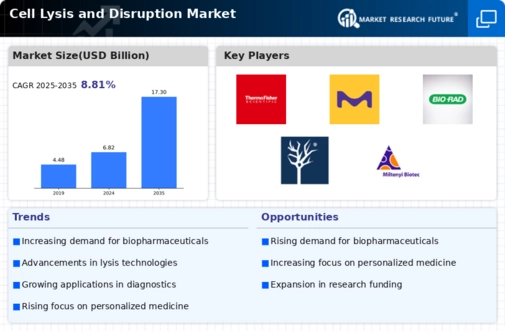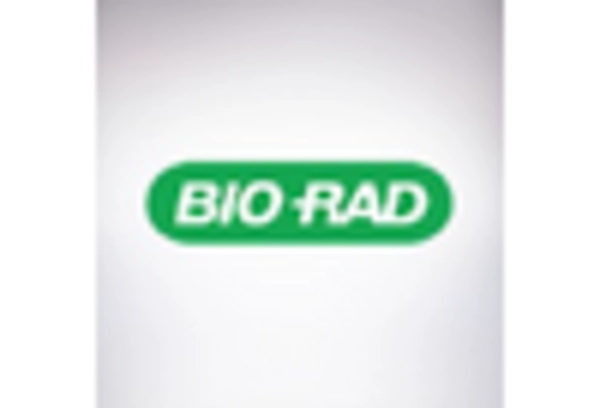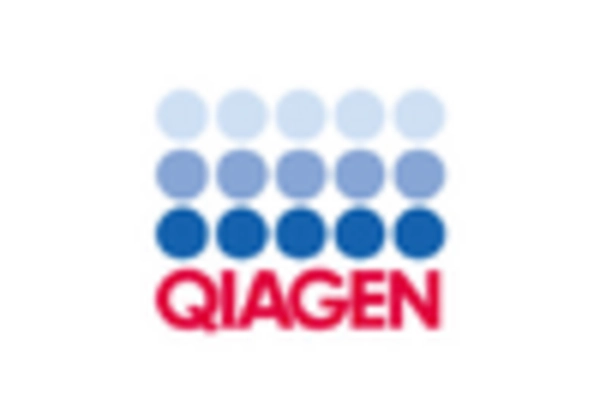-
REPORT PROLOGUE
-
MARKET INTRODUCTION
-
Definition
-
Scope of the Study
- Research Objective
- Assumptions
- Limitations
-
RESEARCH METHODOLOGY
-
3.1.
-
Overview
-
Primary Research
-
Secondary Research
-
Market
-
Size Estimation
-
MARKET DYNAMICS
-
Overview
-
Drivers
-
Restraints
-
Opportunities
-
MARKET FACTOR ANALYSIS
-
5.1.
-
Porter’s Five Forces Analysis
-
5.1.4.
-
Threat of Substitutes
-
Bargaining Power of Suppliers
-
Bargaining Power of Buyers
-
Threat of New Entrants
-
Intensity of Rivalry
-
Value Chain Analysis
-
GLOBAL CELL LYSIS & DISRUPTION MARKET, BY TECHNIQUE
-
Overview
-
Reagent Based
-
Market Estimates & Forecast, by Region, 2020-2027
-
Market Estimates & Forecast, by Country, 2020-2027
-
Detergent
-
Market Estimates & Forecast, by Region, 2020-2027
-
Market Estimates &
-
Forecast, by Country, 2020-2027
-
Market Estimates &
-
Forecast, by Region, 2020-2027
-
Enzymatic
-
Market Estimates & Forecast, by Country,
-
Physical Disruption
-
Market Estimates & Forecast, by
-
Region, 2020-2027
-
Market Estimates & Forecast, by Country, 2020-2027
-
Mechanical Homogenization
-
Market Estimates & Forecast, by Region,
-
Market Estimates & Forecast, by Country, 2020-2027
-
6.3.2.
-
Ultrasonic Homogenization
-
Market Estimates & Forecast, by Region, 2020-2027
-
Market Estimates & Forecast, by Country, 2020-2027
-
Pressure Homogenization
-
Market Estimates & Forecast, by Region, 2020-2027
-
Market Estimates &
-
Forecast, by Country, 2020-2027
-
Market Estimates
-
& Forecast, by Region, 2020-2027
-
Temperature Treatments
-
Market Estimates & Forecast, by Country,
-
GLOBAL CELL LYSIS & DISRUPTION MARKET, BY PRODUCT
-
7.1.
-
Overview
-
Consumables
-
Market Estimates & Forecast, by Region,
-
Market Estimates & Forecast, by Country, 2020-2027
-
7.2.1.
-
Reagents and Kits
-
Market Estimates & Forecast, by Region, 2020-2027
-
Market Estimates & Forecast, by Country, 2020-2027
-
Market
-
Estimates & Forecast, by Region, 2020-2027
-
Market Estimates & Forecast,
-
by Country, 2020-2027
-
Market Estimates & Forecast,
-
by Region, 2020-2027
-
Beads
-
Disposables
-
Market Estimates & Forecast, by Country, 2020-2027
-
Instruments
-
Market Estimates & Forecast, by Region, 2020-2027
-
Market Estimates & Forecast, by Country, 2020-2027
-
Sonicators
-
Market Estimates & Forecast, by Region, 2020-2027
-
Market Estimates &
-
Forecast, by Country, 2020-2027
-
Market Estimates &
-
Forecast, by Region, 2020-2027
-
Homogenizers
-
Market Estimates & Forecast, by Country,
-
French Press
-
Market Estimates & Forecast, by Region,
-
Market Estimates & Forecast, by Country, 2020-2027
-
7.3.4.
-
Microfluidizer
-
Market Estimates & Forecast, by Region, 2020-2027
-
Market
-
Estimates & Forecast, by Country, 2020-2027
-
Market Estimates
-
& Forecast, by Region, 2020-2027
-
Others
-
Market Estimates & Forecast, by Country,
-
GLOBAL CELL LYSIS & DISRUPTION MARKET, BY CELL TYPE
-
8.1.
-
Overview
-
Mammalian Cells
-
Market Estimates & Forecast, by Region,
-
Market Estimates & Forecast, by Country, 2020-2027
-
8.3.
-
Microbial Cells
-
Market Estimates & Forecast, by Region, 2020-2027
-
Market
-
Estimates & Forecast, by Country, 2020-2027
-
Others
-
Market Estimates
-
& Forecast, by Region, 2020-2027
-
Market Estimates & Forecast, by Country,
-
GLOBAL CELL LYSIS & DISRUPTION MARKET, BY END USER
-
9.1.
-
Overview
-
Research Laboratories and Institutes
-
Market Estimates &
-
Forecast, by Region, 2020-2027
-
Market Estimates & Forecast, by Country,
-
9.2.1.
-
Market Estimates & Forecast, by Region, 2020-2027
-
Market Estimates & Forecast, by Country, 2020-2027
-
Others
-
Market
-
Estimates & Forecast, by Region, 2020-2027
-
Market Estimates & Forecast,
-
by Country, 2020-2027
-
GLOBAL CELL LYSIS & DISRUPTION MARKET, BY REGION
-
Overview
-
Americas
- North America
- Latin America
-
Europe
- Western
- Eastern
-
Europe
-
10.3.1.4.
-
Spain
-
Europe
-
Asia-Pacific
- Japan
- China
- Australia
- South Korea
- Rest of Asia-Pacific
-
10.4.3.
-
India
-
Middle East & Africa
- Middle East
- Africa
-
COMPANY LANDSCAPE
-
Overview
-
Competitive Analysis
-
Market Share Analysis
-
Major Growth Strategy in the Global Cell
-
Lysis & Disruption Market
-
Competitive Benchmarking
-
Leading
-
Players in terms of Number of Developments in the Global Cell Lysis & Disruption
-
Market
-
Key developments and Growth Strategies
- New Product
- Merger & acquisitions
- Joint
-
Launch/Service Deployment
-
Ventures
-
Major Players Financial Matrix & Market Ratio
- Major Players R&D Expenditure
-
11.8.1.
-
Sales & Operating Income 2020
-
Major Players Capital Market Ratio
-
COMPANY PROFILES
-
Thermo Fisher Scientific, Inc.
- Company Overview
- Financial Overview
- Key Developments
- SWOT Analysis
- Key Strategies
-
12.1.2.
-
Product Type Overview
-
Merck KGAA
- Company Overview
- Product Type Overview
- Financial
- Key Developments
- SWOT Analysis
-
Overview
-
12.2.6.
-
Key Strategies
-
Bio-Rad Laboratories, Inc.
- Company Overview
- Product Type Overview
- Financial Overview
- Key
- SWOT Analysis
- Key Strategies
- Company Overview
- Product Type Overview
- Financial Overview
- Key Developments
- SWOT
- Key Strategies
-
Developments
-
12.4.
-
Danaher Corporation
-
Analysis
-
Becton Dickinson & Company
- Company Overview
- Product Type Overview
- Financial
- Key Developments
- SWOT Analysis
-
Overview
-
12.5.6.
-
Key Strategies
-
Cell Signaling Technology, Inc.
- Company Overview
- Product Type Overview
- Financial Overview
- Key
- SWOT Analysis
- Key Strategies
- Company Overview
- Product Type Overview
- Financial Overview
- Key Developments
- SWOT
- Key Strategies
-
Developments
-
12.7.
-
Miltenyi Biotec
-
Analysis
-
F. Hoffmann–La Roche Ltd
- Company Overview
- Product Type Overview
- Financial
- Key Developments
- SWOT Analysis
-
Overview
-
12.8.6.
-
Key Strategies
-
Qiagen NV
- Company Overview
- Product
- Financial Overview
- Key Developments
- SWOT Analysis
- Key Strategies
-
Type Overview
-
Qsonica, LLC
- Company Overview
- Product Type Overview
- Financial
- Key Developments
- SWOT Analysis
-
Overview
-
12.10.6.
-
Key Strategies
-
Others
-
APPENDIX
-
References
-
13.2.
-
Related Reports
-
-
LIST OF TABLES
-
GLOBAL CELL LYSIS &
-
DISRUPTION MARKET SYNOPSIS, 2020-2027
-
GLOBAL CELL LYSIS & DISRUPTION
-
MARKET ESTIMATES & FORECAST, 2020-2027 (USD MILLION)
-
GLOBAL CELL
-
LYSIS & DISRUPTION MARKET, BY TECHNIQUE, 2020-2027 (USD MILLION)
-
TABLE
-
GLOBAL CELL LYSIS & DISRUPTION MARKET, BY PRODUCT, 2020-2027 (USD MILLION)
-
GLOBAL CELL LYSIS & DISRUPTION MARKET, BY CELL TYPE, 2020-2027 (USD
-
MILLION)
-
GLOBAL CELL LYSIS & DISRUPTION MARKET, BY END USER, 2020-2027
-
(USD MILLION)
-
GLOBAL CELL LYSIS & DISRUPTION MARKET, BY REGION,
-
NORTH AMERICA: CELL LYSIS & DISRUPTION
-
MARKET, BY TECHNIQUE, 2020-2027 (USD MILLION)
-
NORTH AMERICA: CELL
-
LYSIS & DISRUPTION MARKET, BY PRODUCT, 2020-2027 (USD MILLION)
-
TABLE 10
-
NORTH AMERICA: CELL LYSIS & DISRUPTION MARKET, BY CELL TYPE, 2020-2027 (USD
-
MILLION)
-
NORTH AMERICA: CELL LYSIS & DISRUPTION MARKET, BY END
-
USER, 2020-2027 (USD MILLION)
-
US: CELL LYSIS & DISRUPTION MARKET,
-
BY TECHNIQUE, 2020-2027 (USD MILLION)
-
US: CELL LYSIS & DISRUPTION
-
MARKET, BY PRODUCT, 2020-2027 (USD MILLION)
-
US: CELL LYSIS &
-
DISRUPTION MARKET, BY CELL TYPE, 2020-2027 (USD MILLION)
-
US: CELL
-
LYSIS & DISRUPTION MARKET, BY END USER, 2020-2027 (USD MILLION)
-
TABLE
-
CANADA: CELL LYSIS & DISRUPTION MARKET, BY TECHNIQUE, 2020-2027 (USD MILLION)
-
CANADA: CELL LYSIS & DISRUPTION MARKET, BY PRODUCT, 2020-2027 (USD
-
MILLION)
-
CANADA: CELL LYSIS & DISRUPTION MARKET, BY CELL TYPE,
-
CANADA: CELL LYSIS & DISRUPTION MARKET,
-
BY END USER, 2020-2027 (USD MILLION)
-
LATIN AMERICA: CELL LYSIS &
-
DISRUPTION MARKET, BY TECHNIQUE, 2020-2027 (USD MILLION)
-
LATIN AMERICA:
-
CELL LYSIS & DISRUPTION MARKET, BY PRODUCT, 2020-2027 (USD MILLION)
-
TABLE
-
LATIN AMERICA: CELL LYSIS & DISRUPTION MARKET, BY CELL TYPE, 2020-2027 (USD
-
MILLION)
-
LATIN AMERICA: CELL LYSIS & DISRUPTION MARKET, BY END
-
USER, 2020-2027 (USD MILLION)
-
EUROPE: CELL LYSIS & DISRUPTION
-
MARKET, BY TECHNIQUE, 2020-2027 (USD MILLION)
-
EUROPE: CELL LYSIS &
-
DISRUPTION MARKET, BY PRODUCT, 2020-2027 (USD MILLION)
-
EUROPE: CELL
-
LYSIS & DISRUPTION MARKET, BY CELL TYPE, 2020-2027 (USD MILLION)
-
TABLE
-
EUROPE: CELL LYSIS & DISRUPTION MARKET, BY END USER, 2020-2027 (USD MILLION)
-
WESTERN EUROPE: CELL LYSIS & DISRUPTION MARKET, BY TECHNIQUE,
-
WESTERN EUROPE: CELL LYSIS & DISRUPTION
-
MARKET, BY PRODUCT, 2020-2027 (USD MILLION)
-
WESTERN EUROPE: CELL LYSIS
-
& DISRUPTION MARKET, BY CELL TYPE, 2020-2027 (USD MILLION)
-
WESTERN
-
EUROPE: CELL LYSIS & DISRUPTION MARKET, BY END USER, 2020-2027 (USD MILLION)
-
EASTERN EUROPE: CELL LYSIS & DISRUPTION MARKET, BY TECHNIQUE,
-
EASTERN EUROPE: CELL LYSIS & DISRUPTION
-
MARKET, BY PRODUCT, 2020-2027 (USD MILLION)
-
EASTERN EUROPE: CELL
-
LYSIS & DISRUPTION MARKET, BY CELL TYPE, 2020-2027 (USD MILLION)
-
TABLE
-
EASTERN EUROPE: CELL LYSIS & DISRUPTION MARKET, BY END USER, 2020-2027 (USD
-
MILLION)
-
ASIA-PACIFIC: CELL LYSIS & DISRUPTION MARKET, BY TECHNIQUE,
-
ASIA-PACIFIC: CELL LYSIS & DISRUPTION
-
MARKET, BY PRODUCT, 2020-2027 (USD MILLION)
-
ASIA-PACIFIC: CELL LYSIS
-
& DISRUPTION MARKET, BY CELL TYPE, 2020-2027 (USD MILLION)
-
ASIA-PACIFIC:
-
CELL LYSIS & DISRUPTION MARKET, BY END USER, 2020-2027 (USD MILLION)
-
TABLE
-
MIDDLE EAST & AFRICA: CELL LYSIS & DISRUPTION MARKET, BY TECHNIQUE, 2020-2027
-
(USD MILLION)
-
MIDDLE EAST & AFRICA: CELL LYSIS & DISRUPTION
-
MARKET, BY PRODUCT, 2020-2027 (USD MILLION)
-
MIDDLE EAST & AFRICA:
-
CELL LYSIS & DISRUPTION MARKET, BY CELL TYPE, 2020-2027 (USD MILLION)
-
TABLE
-
MIDDLE EAST & AFRICA: CELL LYSIS & DISRUPTION MARKET, BY END USER, 2020-2027
-
(USD MILLION)
-
-
LIST OF FIGURES
-
RESEARCH PROCES
-
MARKET STRUCTURE FOR THE GLOBAL CELL LYSIS & DISRUPTION MARKET
-
MARKET DYNAMICS FOR THE GLOBAL CELL LYSIS & DISRUPTION MARKET
-
GLOBAL CELL LYSIS & DISRUPTION MARKET SHARE, BY TECHNIQUE, 2020 (%)
-
GLOBAL CELL LYSIS & DISRUPTION MARKET SHARE, BY PRODUCT, 2020 (%)
-
GLOBAL CELL LYSIS & DISRUPTION MARKET SHARE, BY CELL TYPE, 2020 (%)
-
GLOBAL CELL LYSIS & DISRUPTION MARKET SHARE, BY END USER, 2020 (%)
-
GLOBAL CELL LYSIS & DISRUPTION MARKET SHARE, BY REGION, 2020 (%)
-
AMERICAS: CELL LYSIS & DISRUPTION MARKET SHARE BY REGION, 2020 (%)
-
NORTH AMERICA: CELL LYSIS & DISRUPTION MARKET SHARE, BY COUNTRY,
-
EUROPE: CELL LYSIS & DISRUPTION MARKET SHARE, BY REGION,
-
WESTERN EUROPE: CELL LYSIS & DISRUPTION MARKET SHARE,
-
BY COUNTRY, 2020 (%)
-
ASIA-PACIFIC: CELL LYSIS & DISRUPTION MARKET
-
SHARE, BY COUNTRY, 2020 (%)
-
MIDDLE EAST & AFRICA: CELL LYSIS
-
& DISRUPTION MARKET SHARE, BY COUNTRY, 2020 (%)
-
GLOBAL CELL LYSIS
-
& DISRUPTION MARKET: COMPANY SHARE ANALYSIS, 2020 (%)
-
THERMO
-
FISHER SCIENTIFIC, INC.: KEY FINANCIALS
-
THERMO FISHER SCIENTIFIC,
-
INC.: SEGMENTAL REVENUE
-
THERMO FISHER SCIENTIFIC, INC.: REGIONAL
-
REVENUE
-
MERCK KGAA: KEY FINANCIALS
-
MERCK KGAA: SEGMENTAL
-
REVENUE
-
MERCK KGAA: REGIONAL REVENUE
-
BIO-RAD LABORATORIES,
-
INC.: KEY FINANCIALS
-
BIO-RAD LABORATORIES, INC.: SEGMENTAL REVENUES
-
BIO-RAD LABORATORIES, INC.: REGIONAL REVENUE
-
DANAHER
-
CORPORATION: KEY FINANCIALS
-
DANAHER CORPORATION: SEGMENTAL REVENUE
-
DANAHER CORPORATION: REGIONAL REVENUE
-
BECTON DICKINSON
-
& COMPANY: KEY FINANCIALS
-
BECTON DICKINSON & COMPANY: SEGMENTAL
-
REVENUE
-
BECTON DICKINSON & COMPANY: REGIONAL REVENUE
-
FIGURE
-
CELL SIGNALING TECHNOLOGY, INC.: KEY FINANCIALS
-
CELL SIGNALING
-
TECHNOLOGY, INC.: SEGMENTAL REVENUE
-
CELL SIGNALING TECHNOLOGY, INC.:
-
REGIONAL REVENUE
-
MILTENYI BIOTEC: KEY FINANCIALS
-
MILTENYI
-
BIOTEC: SEGMENTAL REVENUE
-
MILTENYI BIOTEC: REGIONAL REVENUE
-
FIGURE
-
F. HOFFMANN–LA ROCHE LTD: KEY FINANCIALS
-
F. HOFFMANN–LA
-
ROCHE LTD: SEGMENTAL REVENUE
-
F. HOFFMANN–LA ROCHE LTD: REGIONAL
-
REVENUE
-
QIAGEN NV: KEY FINANCIALS
-
QIAGEN NV: SEGMENTAL
-
REVENUE
-
QIAGEN NV: REGIONAL REVENUE
-
QSONICA, LLC:
-
KEY FINANCIALS
-
QSONICA, LLC: SEGMENTAL REVENUE
-
QSONICA,
-
LLC: REGIONAL REVENUE









Leave a Comment